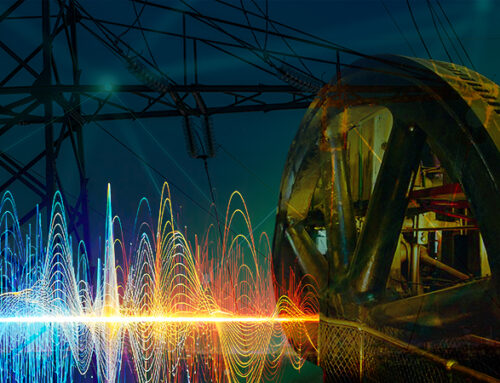National Grid has launched a new frequency response service: Dynamic Containment, designed to provide sub-second response to faults which cause a significant deviation in the electricity system frequency. According to National Grid ESO:
“Currently, the electricity system is experiencing lower inertia and larger, more numerous losses than ever before. Faster acting frequency response products are needed because system frequency is moving away from 50Hz more rapidly as a consequence of imbalances.”
This is the first in a suite of three new frequency response services that is being launched by the system operator.
Following an extensive consultation period, six tenders were received for the inaugural service, from which two battery energy storage units were accepted. These provided 90 MW of fast response services in the first 24 hours, with 165 MW from six units set to compete in the day ahead tender for 2 October.
The ESO will run tenders seven days a week, procuring the service from 11pm to 11pm, in a move that will help to bring the frequency response market closer to real-time. The tender results can be found here.

Dynamic Containment is designed to sit alongside the ESO’s existing frequency products. Initially there will be 500 MW of low frequency response bought from providers, which will grow to 1 GW next year and include high frequency response.

“Dynamic Containment will be a game-changer. The boost the new service will bring to our frequency response capability will further strengthen the system and our ability to maintain a safe and secure electricity supply. It will also allow us to bring more renewable generation into the electricity mix, meaning more progress towards our zero carbon ambition,”
– Ro Quinn, head of national control and chief engineer at National Grid ESO
All technology types will be able to participate in the Dynamic Containment auctions, but battery storage is expected to make up the bulk of provision in the early stages while the service is further developed in consultation with industry.
Other new frequency response services
To sit alongside Dynamic Containment, National Grid ESO is developing two other services: Dynamic Moderation and Dynamic Regulation. Dynamic Moderation is designed to manage sudden frequency imbalances resulting from intermittent generation such as the effect of gusting winds. Dynamic Regulation will enable the system operator to manage small frequency deviations when the frequency is close to 50 Hz.
Earlier this year, National Grid ESO signed contracts with five companies for the provision of inertia without the need to simultaneously provide generation. Drax Group’s Cruachan plant began to provide inertia in July, while Statkraft and Welsh Power are both installing new equipment to enable this service.

Cruachan Power Station is a pumped hydro plant located in Scotland, which has four generating units. Under the contract with NG ESO, one of those will provide the grid with support services including inertia, by using a small amount of power from the grid to spin the turbine 600 times every minute without generating electricity. The weight of the spinning turbine will help to resist changes in grid frequency.
.
As the increasing amounts of renewable energy connects to the grid, and the prospect of demand shocks such as the covid-lockdown remain present, the challenges faced by the system operator in balancing the grid and maintaining frequency stability will continue to grow. National Grid ESO is developing innovative new products and services to address these challenges, but the question is at what cost?
The lockdown period saw an unprecedented escalation in balancing costs, increasing 2.5 times year-on-year for the period May-August, and the beginning of the autumn has continued to see pressure on costs, with curtailment payments to windfarms and spiking wholesale prices.
While I have some sympathies for National Grid ESO as it tries to manage a system that was designed for a very different world, in circumstances no-one could have predicted, there are real questions to be asked as to whether the costs of de-carbonising the electricity system are justified, or indeed whether the public is willing to accept them.






So Dynamic Moderation is the new name for the 12.5GVAs of synchronous condenser provided inertia the Grid procured, and Dynamic Containment is the new name for Enhanced Frequency Response, which began with some 200MW of batteries offered at £7-12/MW/hour of availability in December 2016 with a slightly tweaked frequency response curve.
I read that the Grid expect to run with 500MW initially, expecting to grow that to 1GW next year. With actual demand for DC varying according to weather forecasts we are likely to see considerable volatility in weekly auction prices, particularly as it seems the scope for stacking services may be reduced. The August 9th blackout may be echoing here, as battery performance was below contracted levels, probably because batteries were caught out with the wrong levels of charge to respond. The report on the initial trial auctions criticised the Grid for sticking to a constant 100MW demand. They and our bills may be in for some surprises.
More “surprises” too no doubt over the winter. I’m watching for the Winter Outlook report to see what they are anticipating. Timera has a piece explaining the likely impact of reduced nuclear availability particularly from France, and emphasising the role of interconnectors in transmitting market shocks. I think you made a similar observation not long back.